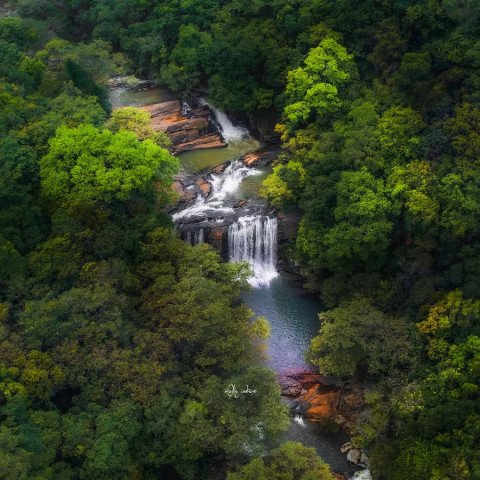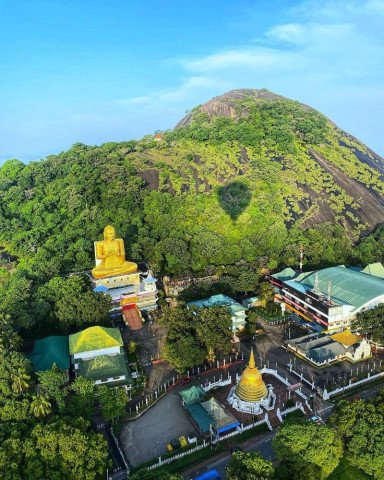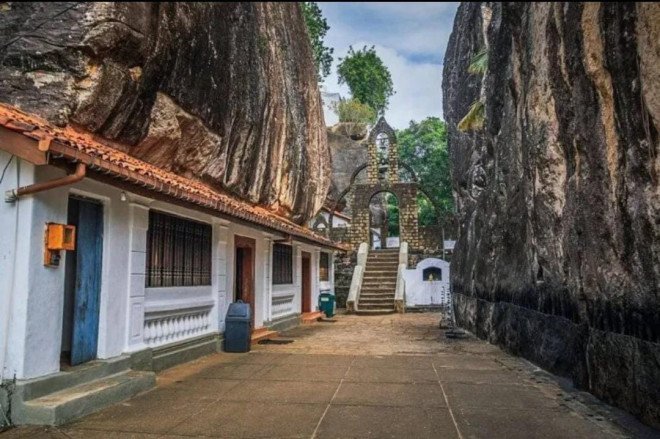Knuckles Forest Reserve, Gomara, Central Province, 20830
Listing Owner
Listing Description :
The Knuckles Mountain Range, locally known as Dumbara Kanduvetiya (meaning "mist-laden mountain range"), is one of Sri Lanka’s most stunning natural treasures. Located in the central highlands, northeast of Kandy, the range stretches across the districts of Matale and Kandy. Its name comes from the distinctive shape of the peaks, which resemble a clenched fist, or "knuckles," when seen from a distance.
Recognized as a UNESCO World Heritage Site, the Knuckles Range is home to a rich variety of biodiversity, including many rare and endemic species of flora and fauna. Thick forests, cloud-shrouded mountains, cascading waterfalls, hidden villages, and wild trails make it a paradise for hikers, nature lovers, and adventurers. Unlike the more crowded tourist spots, the Knuckles remain relatively untouched and offer visitors a peaceful, immersive experience in Sri Lanka’s wild heart.
Frequently Asked Questions (FAQs)
1. Why is it called the Knuckles Mountain Range?
The range is called "Knuckles" because, from certain viewpoints, the five prominent peaks resemble the knuckles of a clenched fist.
2. Where is the Knuckles Mountain Range located?
It is situated in the Central Province of Sri Lanka, mainly within the districts of Kandy and Matale.
3. How can I reach the Knuckles Mountain Range?
Most travelers start from Kandy or Matale. From Kandy, you can reach the Knuckles area by vehicle in about 1.5 to 2 hours, depending on which trailhead or village you plan to start from.
4. Is there an entrance fee to visit the Knuckles Mountain Range?
Yes, certain protected zones within the Knuckles Conservation Forest require a small entrance or permit fee, especially for hiking and camping.
5. What is the best time to visit the Knuckles Mountain Range?
The best time to visit is during the dry seasons from February to June and again from August to October, when trails are safer and weather conditions are more predictable.
6. What activities can visitors do in the Knuckles?
Popular activities include hiking, trekking, bird watching, camping, nature photography, and exploring remote village life.
7. Are there guided tours available?
Yes, there are many local guides and eco-tourism services offering half-day, full-day, and multi-day treks into the Knuckles wilderness. Hiring a guide is highly recommended for safety and to learn about the biodiversity.
8. Are there beginner-friendly hikes in the Knuckles?
Yes, not all hikes are strenuous. Trails like Mini World's End (from Deanston) or short treks to waterfalls are relatively easy and perfect for beginners.
9. Are camping sites available in Knuckles?
Yes, there are designated camping areas, but you must obtain permission from the Forest Department. Camping is only allowed in permitted zones to protect the fragile ecosystem.
10. What wildlife might I see in the Knuckles?
You might encounter deer, wild boar, giant squirrels, lorises, a variety of birds like the Sri Lanka white-eye, and even some rare amphibians and reptiles.
11. What should I pack for a trek in the Knuckles?
Essentials include:
-
Good hiking shoes
-
Backpack with food and plenty of water
-
Raincoat or poncho (weather can change fast)
-
Sunscreen and hat
-
Camera or binoculars for wildlife watching
-
Warm clothing if camping overnight
-
Basic first aid kit
12. How challenging are the treks in the Knuckles Range?
The difficulty varies. Some trails are easy, while others like the Knuckles Five Peaks Hike are moderately to highly challenging and require good fitness.
13. Is it safe to trek alone?
It is safer to trek with a guide or in a group. Trails are often unmarked, and getting lost is a real risk without local knowledge.
14. Are there villages inside the Knuckles Range?
Yes, traditional villages such as Meemure, Corbett's Gap, and Gombaniya are located inside or near the Knuckles. Visiting them offers a glimpse into traditional Sri Lankan rural life.
15. Is there mobile network coverage?
Mobile reception is very weak to nonexistent in many parts of the Knuckles Range, especially deep within the forest.
16. Are drones allowed in Knuckles?
Drone use is not strictly regulated but should be done responsibly, respecting wildlife and villagers' privacy. In some protected areas, drone flying may be restricted.
17. Are there waterfalls inside the Knuckles Range?
Yes, there are several beautiful waterfalls like Dothalugala Falls, Saree Ella, and smaller hidden cascades along various hiking trails.
18. How long do treks usually take?
Short hikes like Mini World's End take about 2–3 hours round trip. More demanding hikes, such as climbing the Five Peaks, can take 8–10 hours or even require overnight camping.
19. Is it possible to visit Knuckles as a day trip?
Yes, many visitors do day trips, especially for short hikes. However, to truly experience the beauty of Knuckles, a multi-day trip is highly recommended.
20. Are there eco-lodges or homestays nearby?
Yes, there are several eco-lodges, forest bungalows, and homestays in villages like Meemure, Rangala, and near Deanston offering simple but memorable stays close to nature.
21. What makes Knuckles special compared to other mountain ranges in Sri Lanka?
The Knuckles Range is unique for its isolated ecosystem, high biodiversity, and remote beauty. It’s less touristy, giving a true wilderness experience compared to places like Ella or Nuwara Eliya.
22. What is the elevation of the Knuckles Range?
The highest peaks reach around 1,800 meters (5,900 feet) above sea level, with Gombaniya Peak being one of the tallest.
23. Can I rent camping gear locally?
In Kandy or Matale, a few adventure stores and tour operators offer camping equipment rentals, but it’s advisable to arrange gear in advance.
















